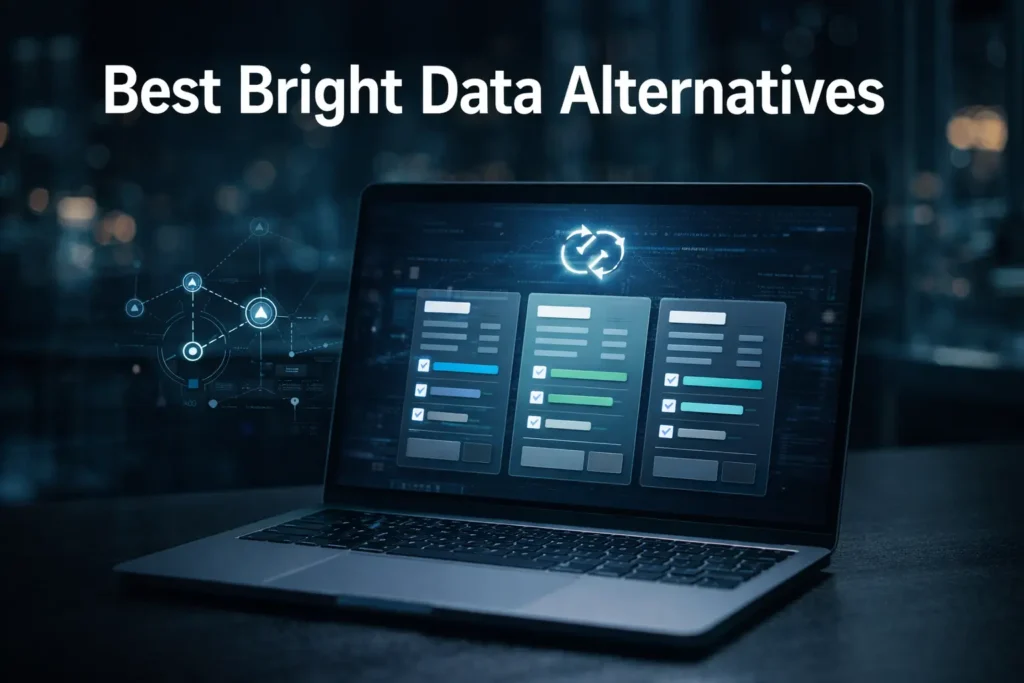Unlike their predecessor, SOCKS4, which offered basic functionalities, SOCKS5 introduces a host of enhancements that cater to the sophisticated needs of contemporary internet activities. From supporting both TCP and UDP traffic to offering multiple authentication methods, the advanced capabilities of SOCKS5 proxies handle a wide range of use cases with ease.
The versatility of SOCKS5 proxies extends beyond basic web browsing. Low latency and efficient data transfer are of the utmost importance in high-performance applications like gaming and video streaming. Perfect for use in real-time scenarios, SOCKS5 proxies support UDP traffic, allowing for uninterrupted and trouble-free communication.
| Interested in buying SOCKS5 proxies? |
| Check out our residential proxies |
Technical Differences between SOCKS4 and SOCKS5 Protocols
Table of Contents
ToggleSOCKS4 was introduced in the early 1990s as a simple and efficient proxy protocol to handle TCP traffic. It provided basic functionalities for routing network packets through a proxy server, primarily used for network security and internet access control. However, as internet usage evolved, the limitations of SOCKS4 became apparent, necessitating a more robust solution.
Language Communication
The transition from SOCKS4 to SOCKS5 can be likened to the shift from old English to modern English. SOCKS4, with its limited feature set, served its purpose well during its time, much like old English.
However, SOCKS5, which operates on OSI layer 5, brought in a modernized and enriched communication protocol, akin to the clarity and expressiveness of modern English. In the same way, SOCKS5’s expanded capabilities and support for various features have made it the preferred choice.
Authentication Options
One of the most significant enhancements in SOCKS5 is its support for multiple authentication methods. While SOCKS4 offered no authentication mechanism, SOCKS5 provides a flexible framework that supports several authentication options:
- No Authentication: Useful in trusted environments where security is not a primary concern.
- Username and Password: Allows for basic access control, ensuring that only authorized users can utilize the proxy.
- GSS-API (Generic Security Services Application Program Interface): Enables integration with various security systems, including Kerberos, providing robust authentication in enterprise environments.
- Custom Authentication Schemes: SOCKS5 supports the implementation of proprietary authentication algorithms, offering additional flexibility for specific use cases.
Support for UDP
Another critical advancement in SOCKS5 is its support for both TCP and UDP traffic. While SOCKS4 was limited to handling TCP connections, SOCKS5’s ability to manage UDP traffic opens up new possibilities:
- TCP Support: Ensures reliable, ordered, and error-checked delivery of data, essential for tasks like web browsing and file transfers.
- UDP Support: Facilitates faster, connectionless communication, ideal for real-time applications such as online gaming, video streaming, and VoIP services.
Also read: Top 5 Best SOCKS5 Proxies
Comparing SOCKS5 with HTTP and HTTPS Proxies
Potential and Theoretical Capabilities
- SOCKS5 Proxies
Theoretically, SOCKS5 proxies can support a wide range of applications beyond web browsing due to their protocol-agnostic nature.
They can handle any type of traffic that uses TCP or UDP, including email, FTP, and peer-to-peer applications. SOCKS5 also allows for more complex scenarios, such as server-side implementations and custom authentication schemes, enhancing its potential use cases.
- HTTP and HTTPS Proxies
HTTP and HTTPS proxies are more specialized, focusing on web traffic. They excel in content filtering, user authentication, and caching, which can optimize web browsing performance and security. While they are theoretically capable of handling any HTTP-based traffic, their use is primarily confined to web content management.
Real-World Implementation and Limitations
- SOCKS5 Proxies
In practice, the full potential of SOCKS5 proxies is often underutilized. Most providers offer basic SOCKS5 functionalities, with limited support for UDP and advanced features. This is due to the complexity of implementing and maintaining a robust SOCKS5 infrastructure.
Despite these limitations, SOCKS5 proxies are still favored for applications requiring protocol flexibility and real-time communication.
- HTTP and HTTPS Proxies
HTTP and HTTPS proxies are widely implemented and supported, with numerous providers offering comprehensive services. These proxies are optimized for web traffic management, providing reliable and efficient performance. However, their specialized nature limits their use to HTTP-based applications, which can be a drawback for users needing broader protocol support.
Common Provider Restrictions and Policies
Providers often impose restrictions on SOCKS5 proxies to manage resources and prevent abuse. Common limitations include:
- Blocking specific ports, such as those used for email servers, to prevent spam.
- Limiting UDP support due to the complexity and resource intensity of managing UDP traffic.
- Restricting custom server setups to avoid potential security risks.
These restrictions can hinder the full exploitation of SOCKS5 capabilities but are necessary for maintaining service quality and security.
Also read: How to Choose the Best SOCKS5 Proxies?
Limitations of SOCKS5 Proxies Compared to VPNs
Functional Differences
- SOCKS5 Proxies
SOCKS5 proxies are primarily designed to route traffic through an intermediary server, masking the user’s IP address and providing basic anonymity. They operate at the session layer, handling both TCP and UDP traffic, and are versatile enough to support a wide range of applications.
However, SOCKS5 proxies do not inherently encrypt the traffic passing through them. They serve primarily to obscure the origin of the traffic and manage protocol-specific routing without providing comprehensive security features.
- VPNs
VPNs operate at the network layer, creating a secure, encrypted tunnel between the user’s device and the VPN server. This tunnel protects all internet traffic, regardless of the application or protocol, ensuring complete privacy and security.
VPNs can change the user’s apparent IP address, bypass geo-restrictions, and protect against surveillance and data interception. The key functional advantage of VPNs over SOCKS5 proxies is their ability to encrypt all traffic, providing a higher level of security.
Encryption and Security Features
- SOCKS5 Proxies
SOCKS5 proxies do not provide built-in encryption. The data transmitted through a SOCKS5 proxy is not encrypted unless the application itself (e.g., HTTPS for web traffic) provides encryption.
This means that while a SOCKS5 proxy can conceal a user’s IP address, it cannot prevent third parties from intercepting or reading the data. The lack of encryption makes SOCKS5 proxies less secure compared to VPNs, especially for sensitive transactions or communications.
- VPNs
VPNs are specifically designed to encrypt all traffic between the user and the internet. They use robust encryption protocols such as OpenVPN, IKEv2/IPsec, and WireGuard to ensure that all data is secure from end to end.
This encryption protects against man-in-the-middle attacks, eavesdropping, and data theft. The comprehensive security features of VPNs make them the preferred choice for users seeking both anonymity and data protection. In addition to protecting against man-in-the-middle attacks, eavesdropping, and data theft, VPNs also offer protection against major DNS attacks. By encrypting all data transmissions, VPNs create a secure and private connection that shields users from potential cyber threats. This level of security and anonymity has made VPNs essential for individuals and organizations looking to safeguard their sensitive information online.
Speed and Performance Trade-offs
- SOCKS5 Proxies
One of the advantages of SOCKS5 proxies is their potential for faster performance in certain scenarios. Since they do not encrypt traffic, the overhead is lower, which can result in reduced latency and higher speeds for specific applications, such as online gaming and streaming.
However, the actual performance gain can vary based on the proxy server’s location, load, and quality. Additionally, the efficiency of a proxy server can greatly influence the overall experience of applications, particularly in scenarios involving edge computing and IoT synergy. A well-positioned proxy can reduce latency and enhance data processing speeds, enabling swift interactions between devices. Consequently, leveraging the right proxy server is essential to maximizing the benefits of these innovative technologies.
- VPNs
VPNs generally introduce more overhead due to the encryption process, which can lead to slower connection speeds and increased latency compared to SOCKS5 proxies. This performance trade-off is the price of enhanced security and privacy.
High-quality VPN providers optimize their networks to minimize these impacts, but users may still experience a decrease in speed compared to using a SOCKS5 proxy.
Also read: SOCKS5 Proxy Settings
Implementing SOCKS5 Proxies for High-Performance Applications
Importance of Low Latency in Gaming
Online gaming relies on having minimal latency. High latency, or lag, can disrupt gameplay, causing delays that negatively impact the user experience. Competitive gaming demands real-time interaction, and even slight delays can be the difference between winning and losing.
How SOCKS5 Proxies Help:
- Direct Routing: By routing traffic directly through a SOCKS5 proxy, gamers can reduce the number of hops their data packets take, minimizing latency.
- Optimized Paths: SOCKS5 proxies can select optimized paths for data transmission, avoiding congested routes and ensuring smoother gameplay.
- Protocol Support: The support for UDP in SOCKS5 is particularly beneficial, as many gaming protocols rely on UDP for its low-latency characteristics.
Use of UDP in Video Streaming Protocols
UDP is the protocol of choice for many video streaming services due to its efficiency and low overhead. Unlike TCP, UDP does not require acknowledgment of packet receipt, which reduces latency and makes it ideal for real-time applications like video streaming.
Benefits of Using SOCKS5 Proxies:
- Low Latency: By handling UDP traffic efficiently, SOCKS5 proxies ensure that video streams are delivered with minimal delay, providing a better viewing experience.
- Bandwidth Optimization: UDP’s lower overhead allows for better bandwidth utilization, which is crucial for high-quality video streaming.
- Stability: SOCKS5 proxies can maintain stable connections, which is vital for avoiding buffering and interruptions during video playback.
Also read: What to Do When Your SOCKS5 Proxies Have Been Blocked?
Setting Up Servers Through SOCKS5 Proxies
Distinguishing Between Server Machines and Server Software
Server Machines:
- Definition: A server machine is a physical or virtual device that runs server software, providing resources, data, or services to other computers over a network.
- Role: In the context of SOCKS5 proxies, the server machine is where the proxy software resides, handling incoming and outgoing traffic.
Server Software:
- Definition: Server software refers to applications and services running on a server machine that perform specific tasks, such as hosting a website, managing email services, or handling database queries.
- Role: When setting up servers through SOCKS5 proxies, server software communicates with the proxy server, which then forwards the traffic to the appropriate destination.
Practical Limitations and Considerations
Limitations:
- Public Accessibility: Most residential proxy providers do not allow the opening of ports for inbound connections due to NAT and firewall configurations. This restricts the ability to host publicly accessible servers through these proxies.
- Performance Overhead: Using a SOCKS5 proxy can introduce latency and affect the performance of server applications, particularly those requiring high-speed or low-latency connections.
- Security Risks: Proxies can potentially be a point of vulnerability. Make sure all traffic is encrypted whenever possible and that the proxy server is secure.
Considerations:
- Use Cases: Determine the specific use case for setting up a server through a SOCKS5 proxy. For example, if the goal is to anonymize traffic or bypass geo-restrictions, ensure the proxy configuration supports these requirements.
- Proxy Quality: Choose a reliable and high-performance SOCKS5 proxy provider to minimize latency and ensure stable connections. Look for providers with low error rates and high uptime.
- Software Compatibility: Ensure that the server software is compatible with SOCKS5 proxies and can correctly route traffic through them.
Use of Public IPs and Port Forwarding
Public IPs:
- Requirement: To make a server accessible over the internet, it must have a public IP address. The SOCKS5 proxy server can manage this IP address or assign it directly to the server machine.
- Dynamic vs. Static IPs: Static IPs are preferable for server applications to ensure consistent accessibility. Be sure there is a way to automatically update DNS records if you are using dynamic IPs.
Port Forwarding:
- Definition: Port forwarding is the process of redirecting communication requests from one address and port number combination to another. This is a must-have if you want to allow external access to internal servers.
- Implementation:
- Proxy Configuration: Configure the SOCKS5 proxy to forward traffic to the appropriate internal server ports. This may involve setting up NAT rules on the proxy server.
- Firewall Rules: Adjust firewall settings to allow traffic on the necessary ports. Ensure that only legitimate traffic is forwarded to minimize security risks.
- Bind Protocol: Utilize the SOCKS5 BIND command to handle inbound connections. This allows the proxy to listen on a port and forward incoming traffic to the designated internal server.
Also read: How to Avoid Getting Your SOCKS5 Proxies Blocked?
Latest Advancements and Trends in Proxy Technology
Introduction to ShadowSocks
ShadowSocks is a secure proxy protocol designed to bypass internet censorship and enhance privacy. It operates as a lightweight and fast alternative to traditional proxies and VPNs.
Unlike SOCKS5, ShadowSocks incorporates encryption and obfuscation techniques to hide the nature of the traffic, making it harder for network filters to detect and block.
Key Features:
- Encryption: ShadowSocks uses modern encryption algorithms to secure data, ensuring that even if traffic is intercepted, it remains protected.
- Performance: Designed for speed, ShadowSocks minimizes latency and overhead, making it suitable for high-bandwidth applications such as video streaming and online gaming.
- Obfuscation: By disguising traffic patterns, ShadowSocks can evade detection by deep packet inspection (DPI) technologies commonly used in restrictive regions.
Impact of HTTP3 Adoption on Proxy Usage
HTTP3 is the latest version of the Hypertext Transfer Protocol, built on top of the QUIC transport protocol. It introduces significant improvements in performance, security, and reliability over HTTP/2.
QUIC uses UDP instead of TCP, providing faster connection setups and reduced latency. This shift has implications for proxy technology, particularly in handling UDP traffic.
Impact on Proxies:
- UDP Handling: With HTTP3’s reliance on UDP, proxies that do not support UDP (such as traditional HTTP proxies) may face limitations. SOCKS5 proxies, which handle both TCP and UDP, are better positioned to support HTTP3 traffic.
- Performance Benefits: HTTP3’s improvements in speed and reliability can enhance the performance of proxy servers that support it, offering faster load times and reduced latency for end-users.
- Adoption Challenges: Widespread adoption of HTTP3 may drive the need for proxy providers to upgrade their infrastructure to fully support the new protocol, ensuring compatibility and maintaining performance standards.
Emerging Technologies and Their Potential
New Proxy Protocols:
- Enhanced Security: Emerging proxy protocols are increasingly focused on enhancing security and privacy. These protocols often incorporate advanced encryption and obfuscation techniques to protect user data and evade detection.
- Performance Optimization: Innovations in proxy technology aim to optimize performance by reducing latency and improving bandwidth utilization. These advancements are particularly important for applications requiring real-time data transmission, such as gaming and video streaming.
Machine Learning and AI:
- Traffic Analysis: Machine learning and AI are being leveraged to analyze traffic patterns, detect anomalies, and improve routing efficiency. This can lead to more intelligent and adaptive proxy services.
- Threat Detection: AI-driven threat detection can identify and mitigate malicious activities in real-time, enhancing the security of proxy networks.
Integration with Emerging Technologies:
- 5G Networks: The rollout of 5G networks promises to deliver unprecedented speeds and low latency. Proxy technologies that can integrate seamlessly with 5G will benefit from these advancements, offering enhanced performance for mobile and IoT applications.
- Edge Computing: The rise of edge computing, which processes data closer to the source, can complement proxy services by reducing latency and bandwidth usage. Proxies integrated with edge computing infrastructure can provide faster and more efficient data routing.
Also read: SOCKS5 Rotating or Static Proxies
Conclusion over the Advanced Capabilities of SOCKS5 Proxies
As the internet continues to evolve with the adoption of new standards like HTTP3 and emerging technologies such as ShadowSocks, SOCKS5 proxies are expected to adapt and incorporate new features to maintain their relevance.
Their contributions to protecting users’ privacy, reducing security risks, and facilitating easy access to restricted content will be significant. These advancements may also extend to empowering users with better control over how their data is collected and shared across platforms. By leveraging tools and methods such as inspect element techniques for websites, individuals can gain deeper insights into the structure and functionality of web pages, enabling them to identify vulnerabilities or customize their browsing experience.
Leveraging the advanced capabilities of SOCKS5 proxies requires an understanding of their technical nuances and the specific needs of your use case. Ensuring secure configurations and choosing reliable providers will maximize the benefits while minimizing potential risks.
How useful was this post?
Click on a star to rate it!
Average rating 0 / 5. Vote count: 0
No votes so far! Be the first to rate this post.
Tell Us More!
Let us improve this post!
Tell us how we can improve this post?


